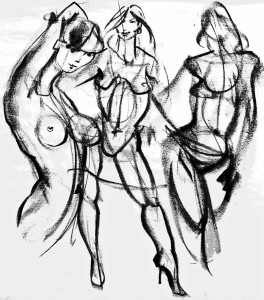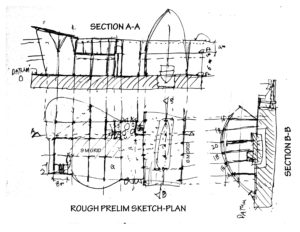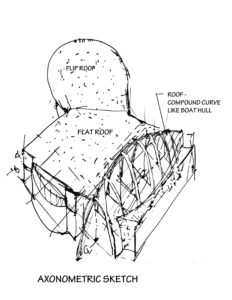I will be attaching more videos to this Category as the Emily Carr University course progresses. You can also view the vids in category: FACE AND FIGURE, or use the search box at the top of the main page.
A FEW WORDS OF ADVICE IN STUDYING FACE & FIGURE from Tony O’Regan
We are all “Students”. We all learn from those who have been on the road a bit longer than us. Here is a little advice from someone who has been on the road for a very long time- Drawing from live models is of great benefit (observational). But, learning to draw from your “internal model” is equally beneficial (constructive) and will make your drawing from life easier and work better. Ask yourself this: “Do I want to always need a model or photo when I want to draw OR do I want to be able to draw skilfully from my imagination, just me and a sheet of paper?” Thankfully, they are not mutually exclusive skills. They are of course complementary, but they are DIFFERENT skills. Try re-drawing the life sketches made in class with greater care and analysis and make the poses a part of your own mental library. This will improve your ‘visual memory’, greatly. Drawing the face and figure may seem challenging, but it is enormously interesting and engrossing. I am easily bored, but after years, this is the least boring thing I ever undertook. Relax, commit to doing it every time you have coffee in the morning for one year. Make study-sheets and carry them in your pocket. Sketch on 8 x 11 simple printer paper folded in your pocket. Date and save some. Take it step by step, memorize, and you will succeed. “The proper study of Mankind is Man”. This is what I did and I suggest it as a way to begin your own study of the face and figure:
FACE
1 – learn to draw and manipulate the generalized manikin ‘head-form”
2 – learn to draw the 4 feature groups, eye, ear, nose, mouth.
3 – learn to proportionately place the feature groups on the head-form.
4 – Study light and shadow patterns on the head-form.
FIGURE
1 – learn to proportionately draw and manipulate the generalized manikin ‘figure-form”
2 – learn to map the anatomy on the figure-form
3 – learn to draw the 3 detail areas: head (as above), hands, and feet.
4 – Study light and shadow patterns on the figure-form.
Along the way you will also want to gradually learn more about the following:
Gesture – lines of force and direction – the “sculptors armature “ for a drawing
Contour – sense of touch, blind contour exercises – the language of line quality
Silhouette – A FUNDAMENTAL ASPECT OF FORM – pos/neg shapes – like shadow puppets
Figure-ground –lighter, darker, transitional relation of figure to background
Mass – wireframe scribble-sculpture – deeper is lighter
Space – underwater metaphor drawing – deeper is darker
Tonality – 3-4 steps plus detail, sparkle-subtlety-impact, importance of the lights
Modeling – Light, shade and shadow
Perspective as applied to figure and context
Composition – What you do with all the above
Major Parts of the body – head, torso, legs, arms,
Major Subcomponents of the Parts – head, neck, yoke/ chest, midriff, pelvis/ deltoids, upper/lower arms/buttocks thigh, lower leg
Three Detail areas of body– head/neck, hands, feet
Four Letters of the Facial Alphabet -eye, nose, mouth, ear
“CONSTRUCTION TRICKS” Sequences, procedures, and visual concepts, such as– the yoke, butt-erfly, shortbows, longbows, pentagon hand, triangle foot, ‘party balloon, fountain pen’ arm/leg, ‘cookie’ hand , plumb-lines etc.
Proportion systems, such as 8-head figure, etc.
Caricature and altered proportions – head and body
Views and ‘turn-arounds’ – Front, side, back, three-quarter
Muscular anatomy, Head and Figure
Skeletal anatomy
Major planes and volumes
Analyzing typical poses: “X-T-C-S”, stand, walk, sit, recline, multiple/movement
Reference- Framing the pose using rectangle and crosshair centerlines
Correcting the pose using plumb lines, triangles and parallelism
Context, floor plane, furniture, containment, background
Composition using context, props, other figures, perspective, cropping and trace paper
Depth – Perspective, overlap, diminution, convergence, atmospherics, lineweight
Twisting and bending the torso
Try various Mediums – Ink wash, Chinese brush, white and sepia chalk, dip-pens, transparent and opaque colour


